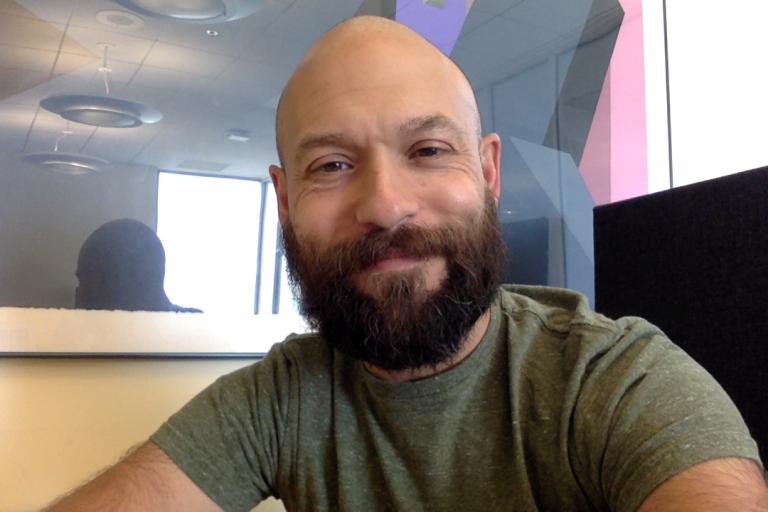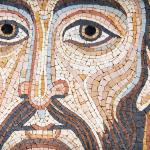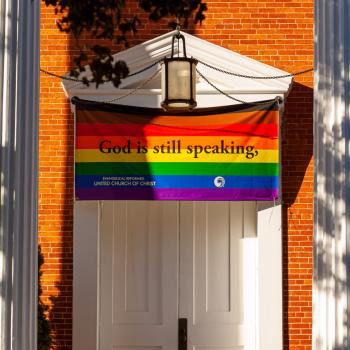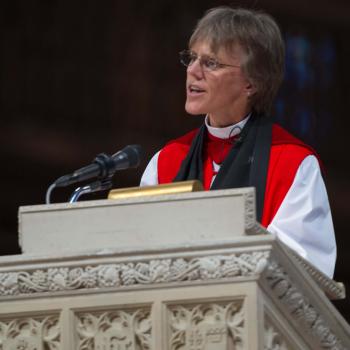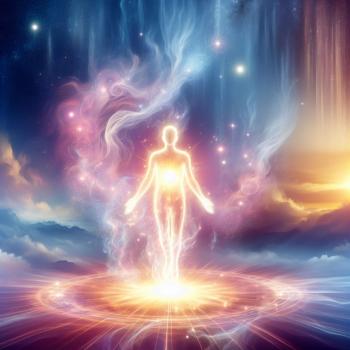In this series I am looking at how human beings share a human nature, a nature that cannot be “deconstructed.” To do this, I first addressed deconstruction stories. The process of deconstruction can help us arrive at some firm foundations about what kind of creatures we are. Then I dealt with the issue of identity itself. I argued that our human identity is not reducible to a social construct. Nor is our identity merely biological. Even if we clearly bear social and biological features that are integral to our identity, our human identity is not exhausted by them. Rather, our true identity is grounded in a divinely endowed status. That status is the metaphysical fact that we are human because we are made in our Creator’s image.
This said, I am not offering an exhaustive defense of human identity here. Nor can I give a complete account of its characteristics. In the next few posts, however, I intend to present concrete evidence of this human identity we all share. In this series I will use nature and identity interchangeably, although metaphysically they are not the same thing.
While skeptics might scoff at these examples, I believe they give evidence for what is the most common-sense belief about human beings. That belief is one held pre-theoretically by most people regardless of race, creed or culture. It can be formulated as such: that people are sacred, socialized embodied beings (or souls). In short, we are divinely created souls embodied in a biological structure that live within in a cultured society and that assume various roles in the context of that cultured society.
In moving from the abstract to the concrete, I now present some personal experiences that give evidence of our shared, human identity.
The Wonderful Woman on the Banzai Falls
A few months ago I visited a well-known water park in Southern California with my three young sons. My middle son, then 5 years old, had not yet ventured down one of the bigger water slides. If he was going to do one of the slides that had some real speed and a legit drop, it would have to be one suited to his size (48″ and under). I picked “Banzai Falls” as the best option– not too steep, but a far more serious water slide than the kids’ “beach house” in the middle of the park.
As we climbed the long staircase holding our polyurethane mats and waiting patiently, I noticed my son getting increasingly nervous with each step. The relevant questions started coming with greater frequency, “Daddy, how fast is this one?,” “Are you sure I’m tall enough to go on it?,” “Can you fall off this?” I encouraged him at every turn, but also left the door open to go back down if he chose to. After all, I figured there would be other opportunities when he was older (but hoping the whole time with fatherly pride that he would brave the falls!).
When we reached the platform at the top, there was a group of three or four people before us. One in the group was a middle-aged African woman (I later found out she was there from Uganda, with all her brothers and sisters). Behind us were a group of young, Muslim women who looked like they were of Middle-Eastern descent. I knew they were Muslim based on their hijab-style bathing suits. Then there was me and my 5-year old son, clearly white and of European descent (I am half Italian, half Irish, roughly. Only God knows what my son is, at least percentage wise).
As my son and I waited behind this very pleasant African woman, we began to notice she was absolutely terrified! It became clear to everyone waiting on the platform and on the staircase that she was afraid of heights, just like my 5 year old son. As the signs of nervousness increased, she became reluctant to place her mat on the slide and lie down to start the run. It looked like she was going to make the long walk back down the stairs, overcome by her fear.
But, then it began: everyone started to cheer her on! Her family down below, a large, joyful looking group, waved and cried encouragements up to their sister/daughter/wife. I could also see them laughing and joking in a genuinely kindhearted and good-natured manner. After all, at the end of the day, this was a ride for anyone over 48 inches! There really was nothing that could go wrong that wasn’t squarely and solely located in the imagination of the rider.
A second wave of cheers and encouragement arose from the staircase. This time from the group of young, Muslim girls, “c’mon, you can do it!” “Don’t worry, it will be fun!” My son and I chimed in. Standing directly behind her, I used my calmest and most reassuring coaching voice: “You can do this! You will love it as soon as you start. Don’t worry, nothing can happen, it’s all in your head right now!”
The woman began to smile and laugh, mainly at herself, showing a touch of embarrassment mingled with humility. She could clearly hear all our encouragement, she could feel the support. She began to laugh and wrestle with her fear. She knew in her head she could do it. She knew that nothing could happen to her. But, fear is deeper than our knowledge sometimes. It lives beneath our reason and mines below our logic.
We all smiled though, in the good and proper way. Me and my son smiled at her and continued to offer words of comfort from behind. The Muslim cheering section proclaimed in unison “you got this!” And the wonderful woman’s family at the bottom of the run, laughing, joking and waving, beckoned to their family member “c’mon, c’mon! Come down here to us!”
But, all of us in our own way were saying something far more meaningful than what our sentences alone expressed. It was far more than just “let’s go” or “you can do it!” What we all were saying was “We know this too. We know fear and we know what it is like to feel it. We know what it feels like and we know what it feels like to overcome it. We understand you. And, because we understand you and what you are experiencing, we are with you!” Because, each and every one of us (with the exception of my son, who would wind up going next) also knew what real and genuine joy there is in overcoming a simple, human fear.
And then, as if by a miracle, the wonderful Uganda woman of Banzai Falls lowered her mat and launched! Seconds later she was at the bottom of the water slide, surrounded by her exuberant family basking in the glory of her hard-fought victory! And then she turned around and looking up with a unparalleled smile fist-pumped back to all her fans up top: to me, my son, the choir of Muslim girls on the stairs and everyone else that I have forgotten about, but who were present there on that glorious Summer afternoon in Orange County.
And then the same choir of encouraging voices broke out once again as my son stepped up to take his place at the top of the falls.
Universal Feature #1: Facing and Overcoming Fear
In that snapshot at the top of “Banzai Falls” at least three distinct, racially constructed identities were represented (Black African, Middle-Eastern and White European). Further, two gendered identities were represented (male and female) and at least one religious identity (Muslim). Other possible socially constructed identities were most certainly present, even if left unknown or unidentified.
For most of us, this picture simply captures normal, everyday American life. Others might mediate on this image and see more than just that. They may marvel at the brilliance of the American experiment. Perhaps they would find great solace in the social diversity on display. However, for still others, this amalgam of identities could present something far more complex. It could also act as an opportunity to point out various social problems, like areas of difference or inequality which might demand political rectification. Perhaps they would view the hijab-style bathing suits of the Muslim girls as oppressive, or argue that my son and I possessed some advantage over the Ugandan woman because, well, just because. In this moment, however, all that was stripped away, especially for the Ugandan woman and my 5-year old son.
Our Common Fears
Clearly each of one of us present at the waterslide had our own customs and traditions, our own very different backgrounds and upbringings, not to mention our biological differences. With all this difference at play, how were we able to unite so quickly and so passionately around this common cause?
There is one aspect of this typical human story that simply does not rely on any part of these socially constructed identities, whether named or unnamed. Nor is it something that is in any way political or could even have a political component. It is something that is far more basic to human beings than the social or the political. It has nothing to do with these and is in no way dependent upon them.
It is the experience of fear and of overcoming fear. This psychological and emotional state of fear resonated with everyone there that day. It resonated regardless of culture, regardless of which sexed body each possessed, regardless of their economic status and regardless of which or whether they professed any deep religious commitments. We all shared in the woman’s fear because we all are the same in this regard. The fact that the middle-aged woman from Uganda and my 5-year old white skinned, blond-haired son were sharing that same fear is evidence of this.
At some point in everyone’s life, given they have developed a certain level of cognitive capacity, they will experience the fear of some thing. They will fear that thing, even if that thing really doesn’t present an objective threat to their bodily existence (like public speaking) or their social status (like COVID-19). Moreover, everyone, at some point in their lives, will either long to overcome their fear and, if they do, experience the joy that follows. This was the case both for the Ugandan woman and for my son (for full disclosure, I gave a quick tug on my son’s mat once I realized he was going to back down. But don’t say anything to him, he still thinks he did it on his own).
Overcoming fear is a universal goal for all people in all cultures and for all times. Unless someone can produce an example of a culture that has treated being fearful as a good thing or living in fear as symbol of virtue, all evidence suggests that fear both binds us together and that the desire to overcome fear motivates us all in the same basic way. Of course, none of this means that everyone of us will have identical experiences of fear or fear the same thing. Nor does it mean, unfortunately, that we will all equally overcome our fear.
The corollary to this, of course, is that we all consider those who instill fear in us or in others as cruel and evil. The “fear-monger” is never a friend of society, regardless of their social identity or biological make-up. That does not mean, however, that the “fear-monger” is always easy to identify. What it does mean though is we all know that fear-mongering is wrong. Had there been a fear-monger on the platform at the Banzai Falls that summer afternoon, we all would have known it. Fortunately, there were none, at least none who vocalized their evil.
Those Who Walk in Darkness
Theologically speaking there are only two kinds of fear: Fear of the LORD or fear of anything or everything else in His creation. However, if one’s fear is properly placed, namely, in reverential fear of God, then all other fears begin to melt away. The reason to fear God and only God is simple: all of created reality exists on account of God and it subsists only because of His continued conservation of it. The author of Proverbs tells us that it is this fear, the fear of the Lord that is the beginning of true knowledge. To begin with any other kind of fear, any fear of some thing in the world, will lead us, the sacred and embodied human creatures that we are, far astray from God’s divinely appointed end.
To fear God is to find peace with His world. It is to see things like COVID-19 or its vaccines, racism or anti-racism, capitalism or communism, a child’s angry father or her manipulative mother, all in their right place. For if our fear is in an all-powerful and all-loving God, then truly none of these things, to include a water slide with a mildly steep drop, can keep us from overcoming these all-too-human and all-too-common fears.
We are fearful creatures. Unfortunately, for the wicked (and the demons they serve) that shared feature of our humanity becomes an insidious tool for control. It can become a tool for any of us, since we also share in a sinful nature. The beginning of much evil is fear, something even George Lucas understood when he put these simple yet true words into the one of the most memorable voices of our times:
Fear leads to anger, anger leads to hate, hate to suffering.
Yoda (Frank Oz), Star Wars
Many today will recognize the words of the fictional master Yoda. However, one suspects that Lucas pilfered this sentiment from a much more ancient source.
Have seen a great light
Of course the answer to our common human fear is not only in the concept of the fear of the Lord, it is in the person of God Himself. The answer to fear is not in the power of a light saber (however cool it might be to have one), it is in the power of the Light of the World.
The question we all must pose to ourselves is this: will we continue to live in darkness or will we open our eyes to see that great Light? As we stand at the precipice of our own Banzai Falls, whatever that might be, will we hear the voice of the Lord of Light, the God who was crucified on our behalf, calling out to us “I know this, I know what you are feeling. I understand you, and because I understand you, I am with you!”
The people walking in darkness
have seen a great light;
on those living in the land of darkness,
a light has dawnedIsaiah 9:2
Life was in Him,
and that life was the light of men.
That light shines in the darkness,
yet the darkness did not
overcome it.John 1:4-5


